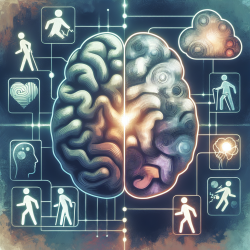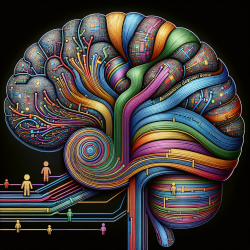Introduction
In the realm of speech-language pathology, understanding the intricate relationship between brain lesions and their outcomes is crucial. A recent study titled Location of lesion determines motor vs. cognitive consequences in patients with cerebellar stroke provides significant insights into how different regions of the cerebellum affect motor and cognitive functions. This blog aims to translate these findings into practical strategies for practitioners, especially those involved in online therapy services like TinyEYE, to improve outcomes for children with cerebellar strokes.
Key Findings
The study utilized voxel-based lesion-symptom mapping to explore the impact of cerebellar lesions on motor and cognitive functions. The findings are pivotal:
- Motor Deficits: Lesions in the anterior cerebellum, particularly lobules III-VI, are associated with motor impairments such as ataxia.
- Cognitive Deficits: Damage to the posterior cerebellum, including lobules VII-VIII, correlates with cognitive impairments, notably in language, spatial processing, and executive functions.
These outcomes highlight the cerebellum's role beyond motor control, emphasizing its involvement in cognitive processes.
Clinical Implications
Understanding the cerebellum's functional topography can enhance clinical assessments and interventions. Here’s how practitioners can implement these findings:
- Targeted Assessments: Use specific tests to evaluate motor and cognitive functions based on lesion location. For instance, assess fine motor skills if the anterior cerebellum is affected.
- Customized Interventions: Develop therapy plans that address both motor and cognitive deficits. For example, integrate language exercises for patients with posterior cerebellar damage.
- Prognostic Insights: Predict potential outcomes based on lesion location, aiding in setting realistic goals and expectations for recovery.
Encouraging Further Research
While this study provides valuable insights, further research is essential to refine our understanding of cerebellar functions. Practitioners are encouraged to:
- Participate in Research: Collaborate with researchers to contribute clinical data and insights.
- Stay Informed: Keep abreast of new studies and advancements in neuroimaging and lesion-symptom mapping.
- Apply Evidence-Based Practices: Continuously update therapy approaches based on the latest research findings.
Conclusion
The study underscores the importance of lesion location in determining the motor and cognitive consequences of cerebellar strokes. By integrating these insights into clinical practice, practitioners can enhance therapy outcomes for children affected by such conditions. For a deeper dive into the research, please refer to the original paper: Location of lesion determines motor vs. cognitive consequences in patients with cerebellar stroke.










